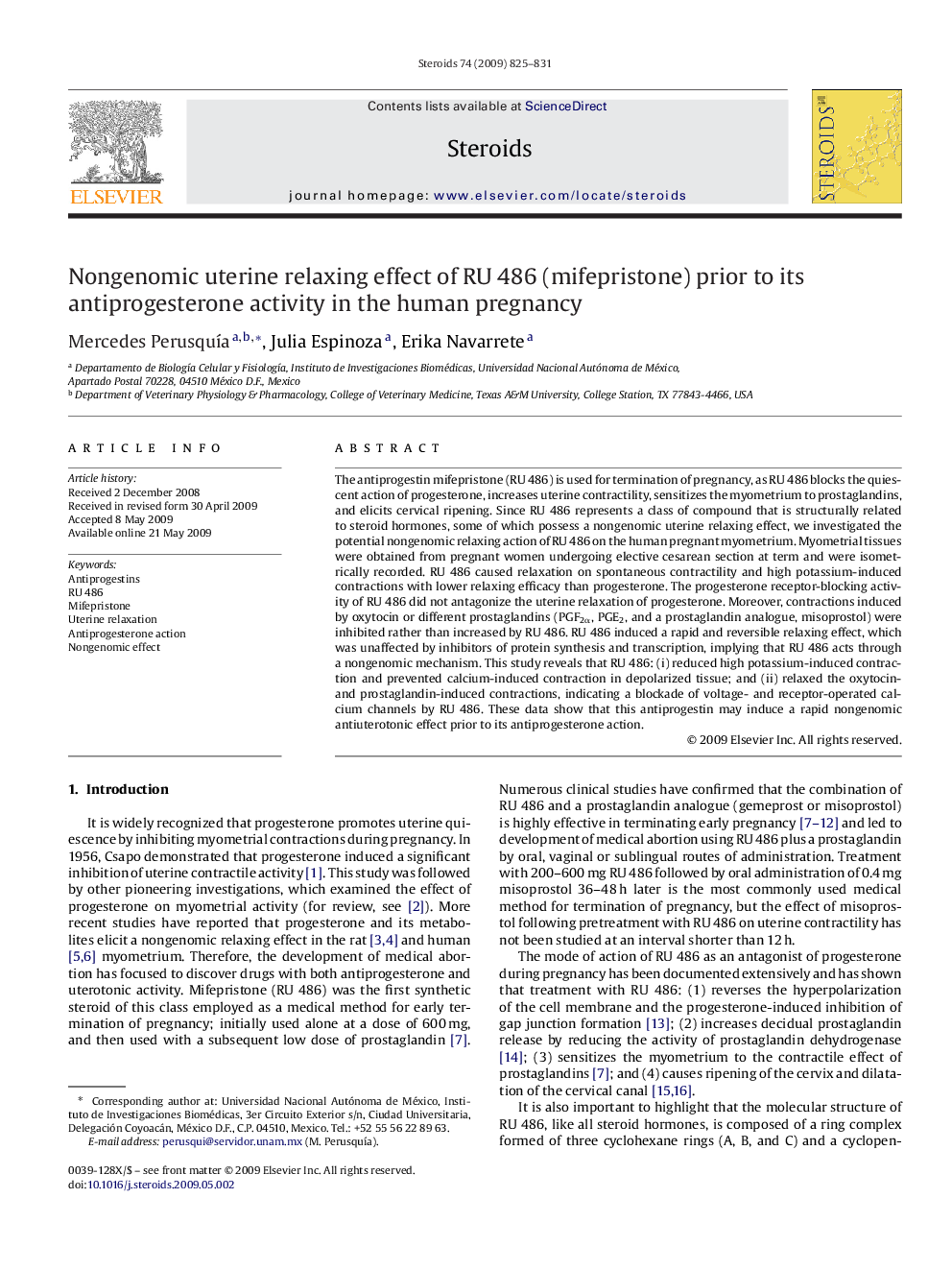| Article ID | Journal | Published Year | Pages | File Type |
|---|---|---|---|---|
| 2028712 | Steroids | 2009 | 7 Pages |
Abstract
The antiprogestin mifepristone (RU 486) is used for termination of pregnancy, as RU 486 blocks the quiescent action of progesterone, increases uterine contractility, sensitizes the myometrium to prostaglandins, and elicits cervical ripening. Since RU 486 represents a class of compound that is structurally related to steroid hormones, some of which possess a nongenomic uterine relaxing effect, we investigated the potential nongenomic relaxing action of RU 486 on the human pregnant myometrium. Myometrial tissues were obtained from pregnant women undergoing elective cesarean section at term and were isometrically recorded. RU 486 caused relaxation on spontaneous contractility and high potassium-induced contractions with lower relaxing efficacy than progesterone. The progesterone receptor-blocking activity of RU 486 did not antagonize the uterine relaxation of progesterone. Moreover, contractions induced by oxytocin or different prostaglandins (PGF2α, PGE2, and a prostaglandin analogue, misoprostol) were inhibited rather than increased by RU 486. RU 486 induced a rapid and reversible relaxing effect, which was unaffected by inhibitors of protein synthesis and transcription, implying that RU 486 acts through a nongenomic mechanism. This study reveals that RU 486: (i) reduced high potassium-induced contraction and prevented calcium-induced contraction in depolarized tissue; and (ii) relaxed the oxytocin- and prostaglandin-induced contractions, indicating a blockade of voltage- and receptor-operated calcium channels by RU 486. These data show that this antiprogestin may induce a rapid nongenomic antiuterotonic effect prior to its antiprogesterone action.
Related Topics
Life Sciences
Biochemistry, Genetics and Molecular Biology
Biochemistry
Authors
Mercedes PerusquÃa, Julia Espinoza, Erika Navarrete,
